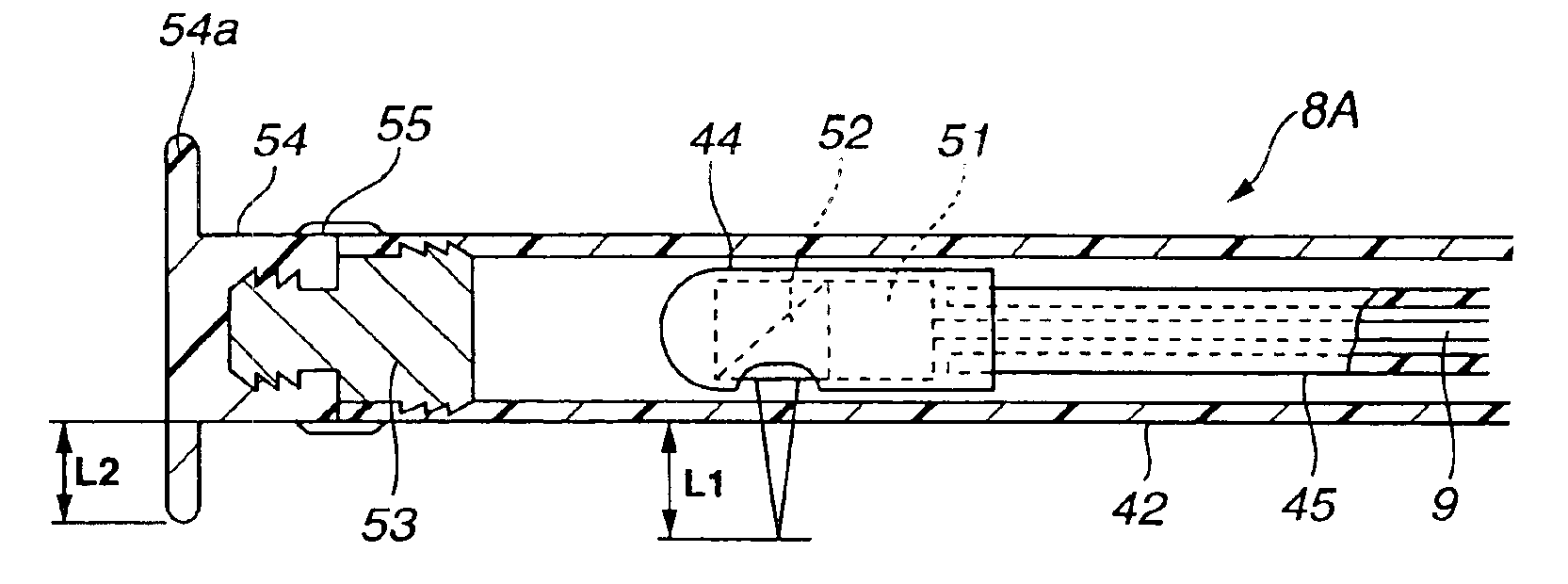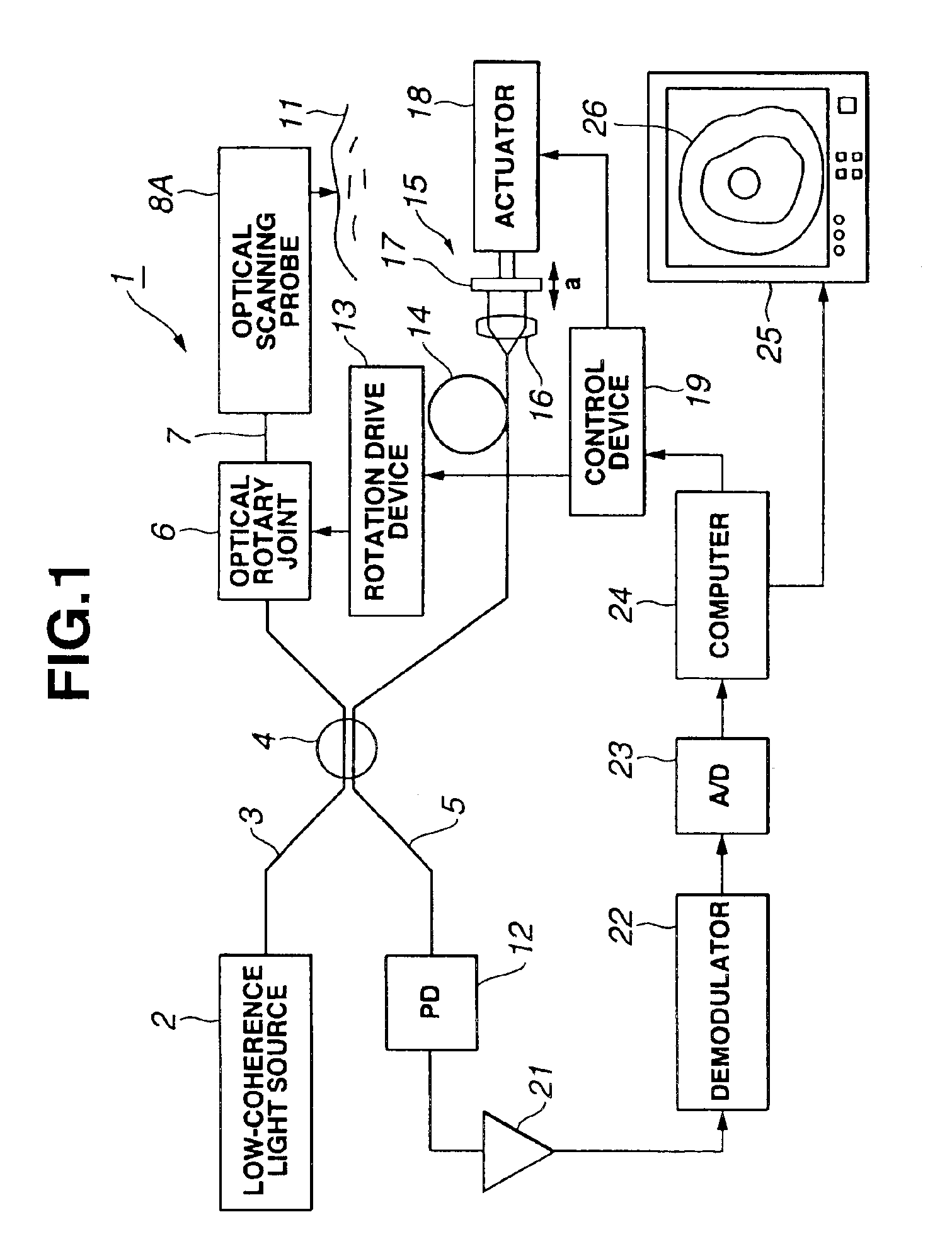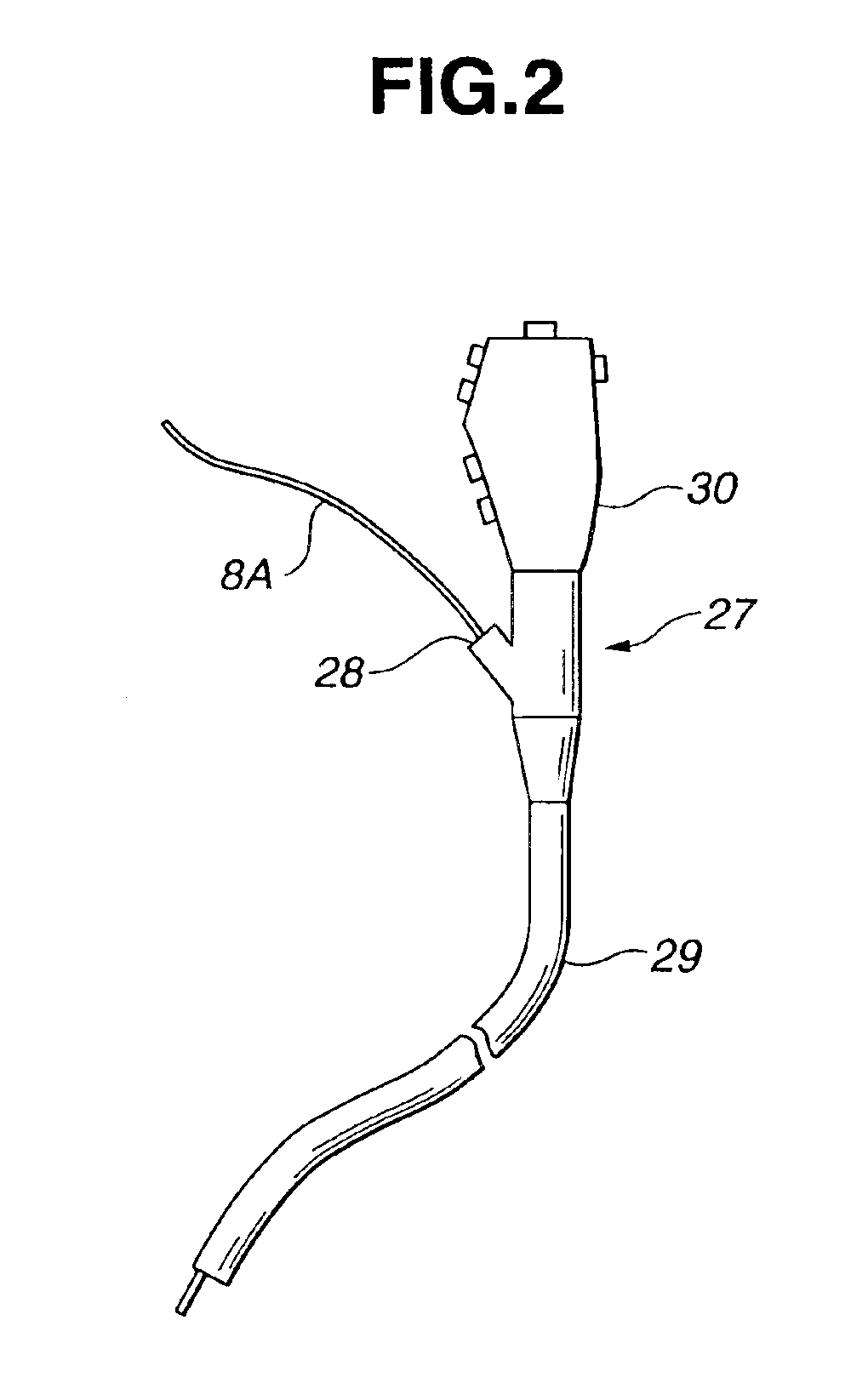Light scanning probe apparatus using light of low coherence
a light scanning and low coherence technology, applied in the field of optical scanning probe devices, can solve the problems of difficult observation at a given distance from living organ tissue, cumbersome handling, and high cost of laser light sources, and achieve the effect of convenient observation
- Summary
- Abstract
- Description
- Claims
- Application Information
AI Technical Summary
Benefits of technology
Problems solved by technology
Method used
Image
Examples
first embodiment
[0145](First Embodiment)
[0146]The first embodiment according to the present invention will be described with reference to FIG. 1 to FIG. 9.
[0147]An optical tomography device 1 shown in FIG. 1 includes a low-coherence light source 2, for example, a super luminescent diode (hereafter abbreviated as SLD). This low-coherence light source 2 is provided with characteristics of low-coherence light exhibiting coherence only in a short-distance range in which the wavelength thereof is, for example, 1,300 nm and the coherence length is, for example, on the order of 17 μm. That is, in the case where this light is divided into, for example, two portions and, thereafter, the two portions are mixed again, when the difference between two optical path lengths from the division point to the mixing point is within the short-distance range on the order of 17 μm, this light is detected as the light in which interference has occurred, and when the optical path length is larger than that, characteristics...
second embodiment
[0203](Second Embodiment)
[0204]The second embodiment according to the present invention will be described with reference to FIG. 10 and FIG. 11.
[0205]An optical probe 8C according to the present embodiment includes an optical probe main body 58 as shown in FIG. 11 and a sheath portion with blade 59A freely attachable to and detachable from the optical probe main body 58.
[0206]This optical probe 8C has the structure of the optical probe 8A according to the first embodiment, wherein an inner sheath 60 which covers the flexible shaft 45, housing 44, etc., and which has pliability and light transmittance is provided inside the sheath 42, and at the base end of the inner sheath 60, a connection portion 61 is provided in order that the base end of the sheath 42 can be freely attached thereto and detached therefrom. The tip of the inner sheath 60 is blocked watertight by, for example, a half-round tip cap 62.
[0207]An internal thread portion (constituting the connection portion 61) is provi...
third embodiment
[0213](Third Embodiment)
[0214]The third embodiment according to the present invention will be described with reference to FIG. 12 and FIG. 13.
[0215]Regarding an optical probe 8D according to the present embodiment, in the first embodiment, the connection member 53 is fixed watertight to the tip of the sheath 42 on this connection member 53, an external thread portion 64 is provided in order that the blade member 54 side provided with the blade 54a can be freely attached and detached so as to form an optical probe main body 65, and blade unit 67A provided with a internal thread member 66, which can be freely attached to and detached from the external thread portion 64 by thread engagement, is formed on the blade member 54 side.
[0216]In the present embodiment, the blade 54a is formed at the rear end portion of the blade member 54. In the present embodiment, a protrusion portion (or small diameter portion) 68, which is protruded from the outer diameter of the internal thread member 66 ...
PUM
| Property | Measurement | Unit |
|---|---|---|
| coherence length | aaaaa | aaaaa |
| coherence length | aaaaa | aaaaa |
| distance | aaaaa | aaaaa |
Abstract
Description
Claims
Application Information
 Login to View More
Login to View More - R&D
- Intellectual Property
- Life Sciences
- Materials
- Tech Scout
- Unparalleled Data Quality
- Higher Quality Content
- 60% Fewer Hallucinations
Browse by: Latest US Patents, China's latest patents, Technical Efficacy Thesaurus, Application Domain, Technology Topic, Popular Technical Reports.
© 2025 PatSnap. All rights reserved.Legal|Privacy policy|Modern Slavery Act Transparency Statement|Sitemap|About US| Contact US: help@patsnap.com



